Cease and Desist Letter Template for Legal Matters
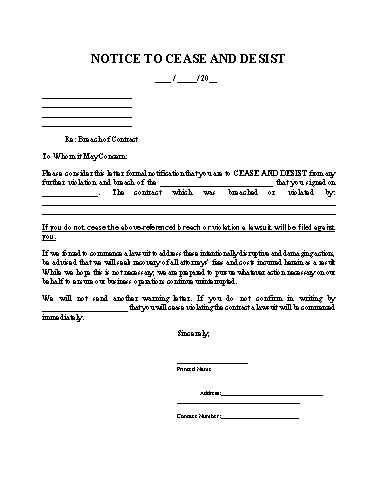
When faced with unauthorized actions, it may be necessary to formally demand that the infringing party halts their behavior. These formal communications serve as a legal tool to protect rights and prevent further harm. Whether it’s for intellectual property, privacy violations, or other types of misconduct, such correspondence plays a vital role in addressing disputes.
Crafting an effective document requires clear language and precise information. The goal is to ensure the recipient understands the seriousness of the request and the legal consequences of non-compliance. This type of communication can resolve issues before they escalate, saving time and resources in a formal courtroom setting.
Understanding the structure and key elements of such a document is crucial for making it legally binding. Properly drafted communication can act as a powerful deterrent against continued violations, while offering an opportunity for a swift resolution without prolonged legal battles.
What Is a Cease and Desist Letter
When someone engages in illegal or harmful actions that infringe on another’s rights, a formal request may be made to stop such behavior immediately. This communication serves as a clear notice that the recipient must halt the unwanted conduct or face potential legal consequences. It is a proactive approach to resolving conflicts without the need for lengthy court proceedings.
Purpose of the Document
The main purpose of such a communication is to inform the recipient of the wrongful actions they are engaged in and request that they stop. It outlines the specific behavior that needs to be halted and the legal ramifications of continued infringement. By addressing the issue early, it offers both parties a chance to resolve matters swiftly and without further escalation.
Legal Importance
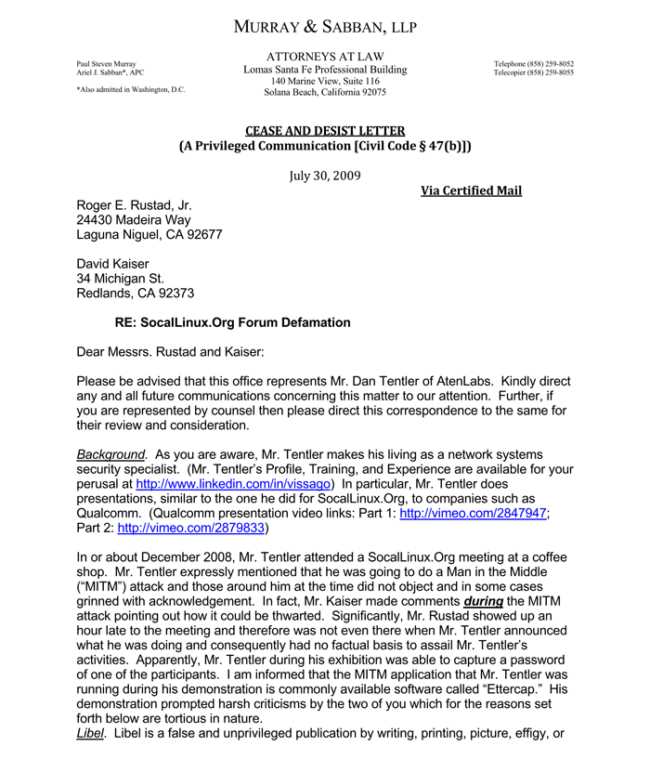
In legal terms, this type of communication is often used as a precursor to formal legal action. Sending such a notice provides evidence that the sender attempted to resolve the matter outside of court. If the issue continues, the sender may then use this document as proof that they took reasonable steps to address the situation before resorting to litigation.
Steps to Create Your Custom Template
When drafting a formal request to stop unlawful behavior, it’s important to tailor the document to the specific situation. A well-crafted notice ensures clarity and enhances the chances of a quick resolution. By following a clear structure and including the necessary details, you can create an effective communication that addresses the issue directly and professionally.
Essential Information to Include
Your document should contain all the vital details to make it legally sound. This includes identifying the parties involved, describing the offending actions, and outlining the consequences of non-compliance. Here’s a basic outline of the key elements:
| Section | Description |
|---|---|
| Sender’s Information | Clearly state your name or company name and contact details. |
| Recipient’s Information | Include the name and contact details of the person or entity being addressed. |
| Description of Violation | Provide a clear explanation of the actions being contested and how they violate your rights. |
| Request for Action | State what you expect the recipient to do, such as stopping the infringement or removing the content. |
| Consequences | Detail the potential legal actions or penalties if the violation is not stopped. |
Personalizing Your Request
Once you’ve identified the key components, it’s time to personalize the request. Adjust the tone and language to suit the situation and the relationship between the parties. For example, a more formal tone may be necessary when addressing a business, while a less formal approach could be used for a personal dispute. Ensure the document is professional and polite, even while conveying the seriousness of the situation.
Essential Components of an Effective Letter
An effective formal request to stop unlawful actions must include specific elements that convey the seriousness of the issue while remaining clear and direct. Without these critical components, the document may lack the legal power to compel the recipient to take action. A well-organized communication ensures that the recipient understands both the legal violation and the consequences of ignoring the request.
Clear Identification of Parties Involved
To make the communication legally valid, it’s important to clearly identify both the sender and the recipient. Include the full name, address, and contact information for each party. This helps avoid confusion and ensures the recipient knows exactly who is making the request and who is being addressed.
Detailed Description of the Violation
One of the most crucial parts of any formal request is detailing the behavior or actions that need to be stopped. Be specific and concise in describing how the recipient’s actions have infringed on your rights. The more precise you are, the harder it will be for the recipient to ignore the issue or dispute your claims.
Determining the Right Time to Send
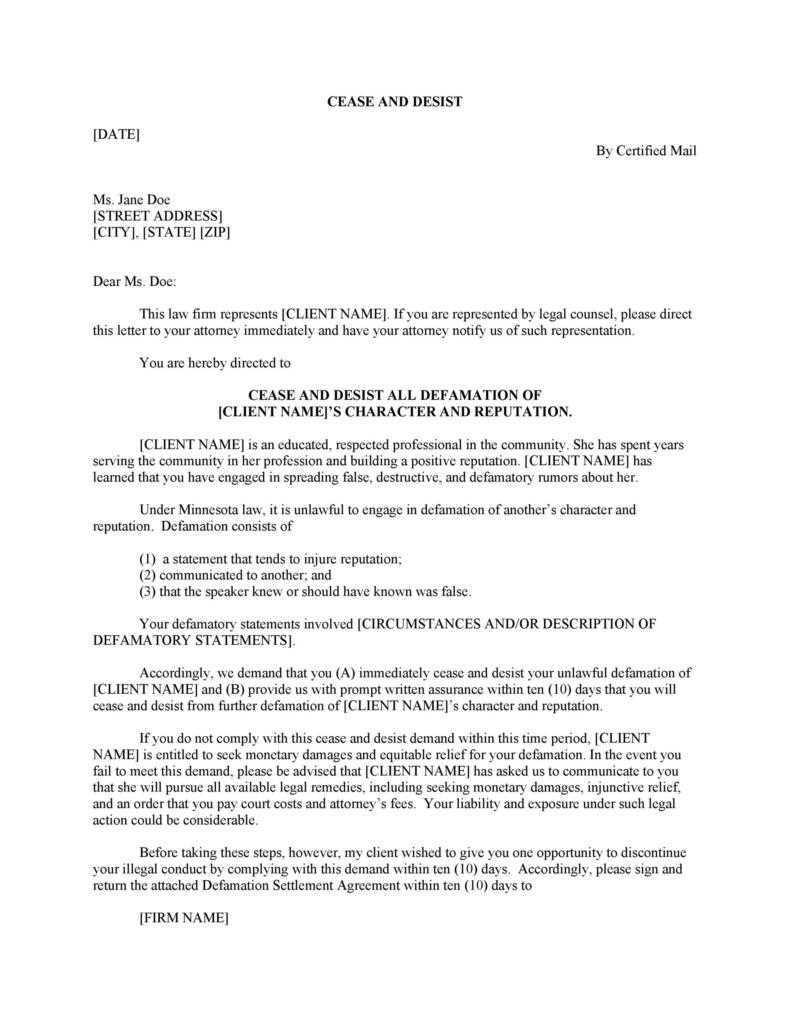
Timing is crucial when deciding to formally request that someone stop unlawful actions. Sending such a communication too early or too late can impact its effectiveness and the potential for resolving the situation without legal action. It’s essential to assess the situation carefully to determine the most appropriate moment to act.
Assessing the Severity of the Violation
The first factor to consider is the severity of the infringement. If the unlawful behavior is causing significant harm, it may be necessary to act quickly. On the other hand, if the issue is minor, you may want to consider giving the recipient a chance to rectify the situation informally before resorting to formal communication.
Providing a Reasonable Warning
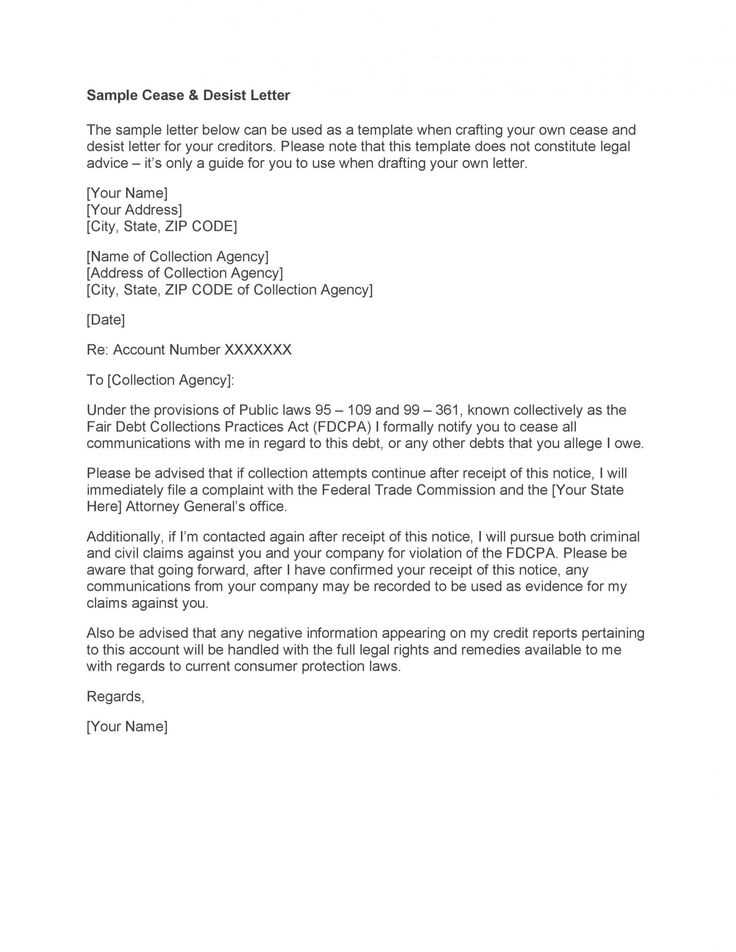
In some cases, it’s beneficial to give the recipient a warning before sending the formal request. This approach allows the individual or entity to address the issue on their own, potentially avoiding a legal confrontation. A reasonable warning demonstrates that you attempted to resolve the matter amicably before taking formal action.
How to Address Common Mistakes
When preparing a formal request to stop unlawful actions, it is crucial to avoid common errors that could weaken the effectiveness of the communication. These mistakes may lead to misunderstandings, delays, or even the dismissal of the request. By being aware of potential pitfalls, you can ensure that your notice is clear, professional, and legally sound.
Overly Aggressive Tone
One common mistake is adopting an overly aggressive or confrontational tone. While it’s important to convey the seriousness of the situation, being overly harsh or threatening can backfire. Maintain a firm but polite tone, focusing on the facts of the situation and outlining the desired resolution without hostility.
Lack of Specificity
Another frequent error is not providing enough detail about the violation. Simply stating that the recipient is in the wrong without offering concrete examples can lead to confusion or a lack of urgency. Make sure to clearly describe the infringing actions and the specific rights that have been violated. This clarity helps to make your request more compelling and difficult to ignore.
Consequences of Disregarding a Legal Notice
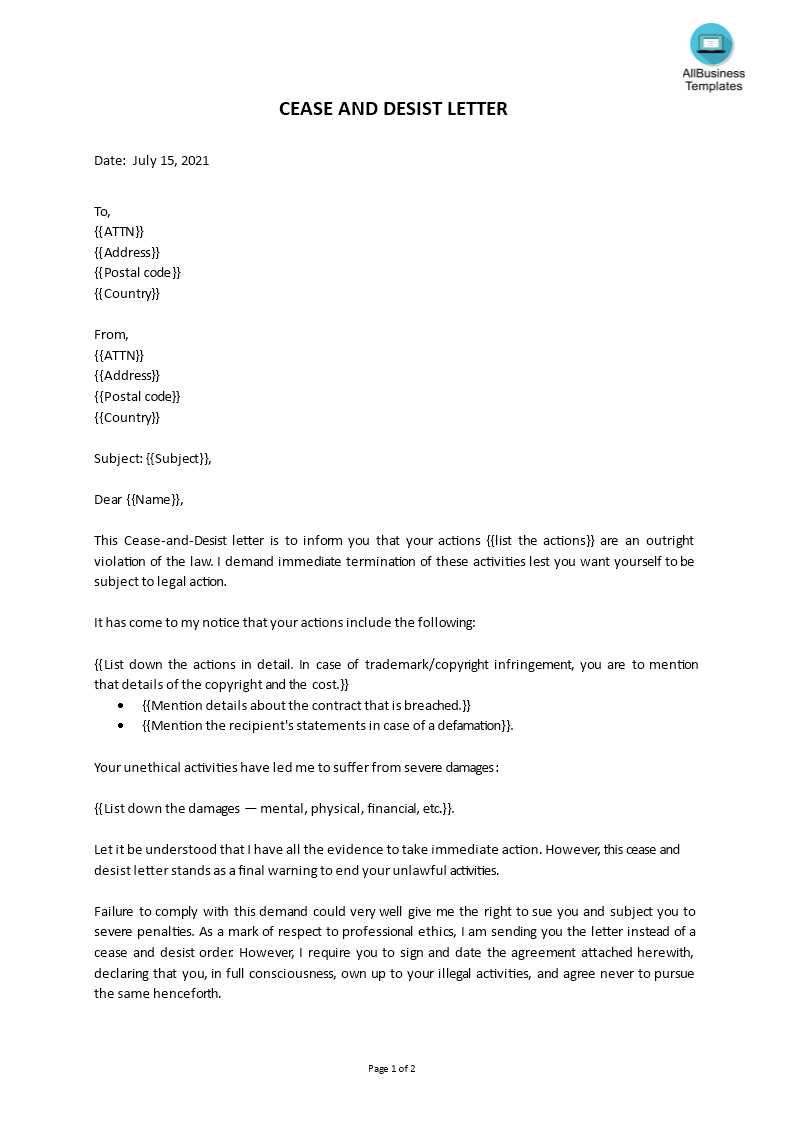
Ignoring a formal request to stop unlawful actions can have serious consequences for the recipient. It’s important to understand that such a disregard could escalate the situation, leading to further legal actions or financial repercussions. Failing to comply with the notice may signal to the sender that the recipient is unwilling to resolve the issue amicably, prompting more severe measures.
Legal and Financial Risks
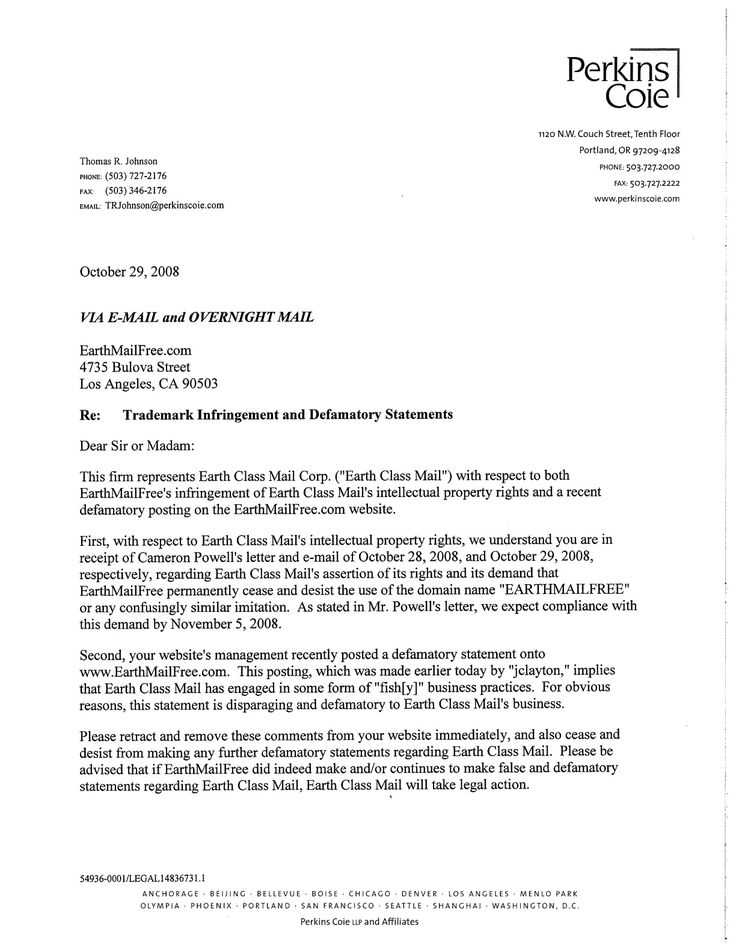
When a recipient fails to act on a formal notice, several legal and financial consequences may arise:
- Potential Lawsuits: Ignoring the communication could result in a lawsuit, where the recipient may be required to pay damages for the infringement.
- Increased Costs: Legal action often leads to higher costs due to court fees, attorney fees, and other associated expenses.
- Judgments and Penalties: A court ruling could result in financial penalties or orders to cease the harmful activities.
Reputation Damage
In addition to legal and financial risks, disregarding a formal request can also damage the recipient’s reputation. The sender may choose to publicly disclose the dispute, potentially harming the recipient’s standing within their industry or community. This negative publicity could result in loss of clients, customers, or business opportunities.
Exploring Alternatives to a Cease and Desist
While sending a formal notice to halt unlawful activities is a common approach, there are other methods to resolve disputes effectively. Depending on the situation, choosing an alternative might lead to a more amicable resolution without the need for legal escalation. Exploring these alternatives can provide flexibility and reduce the overall conflict.
Mediation or Arbitration
Instead of sending a formal demand, engaging in mediation or arbitration can be a less adversarial solution. These processes allow both parties to discuss the issue with the help of a neutral third party, working toward a mutually beneficial outcome.
- Mediation: A mediator facilitates communication between parties to reach a voluntary agreement.
- Arbitration: An arbitrator makes a binding decision after hearing both sides, often faster and less formal than going to court.
Negotiating Directly with the Opposing Party
In some cases, reaching out directly to the person or organization involved can lead to a quicker resolution. Direct negotiation provides both parties the opportunity to resolve the matter without formal intervention, allowing for more flexibility in finding a solution.
- Open Dialogue: Expressing concerns and seeking a resolution through direct communication may prevent further conflict.
- Settlement Agreement: A legal agreement may be drawn up to ensure that both sides understand their obligations and avoid future issues.